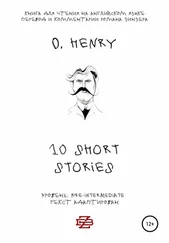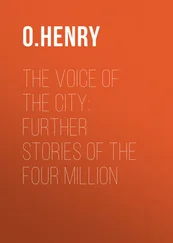The following weekend we all ski down to Davos to resupply. I’m responsible for the sausage, bread, lemons, raisins, prunes, sugar, and raspberry syrup. The entire way down I’m determined not to call on Ruth, and the instant I hit the valley floor I go to the rooming-house address she provided. I’m ushered into the breakfast room and watch her butter both sides of a biscuit before she glances toward me.
The breakfast room has a view of the Jakobshorn. Filaments of snow and vapor stream from its summit in the wind. It’s foreshortened here, as opposed to how it appears from nine thousand feet. Under overcast conditions the peak splits the clouds that pass over as though tearing fabric.
“I was always jealous of your mother,” Ruth remarks, once I’ve settled into my chair. The wicker seat’s seen better days and every movement occasions fusillades of pops and cracks.
“She and Willi had this tradition of summer walks,” I tell her, though she probably knows. “She called them revivifying. She told me a neighbor said to her once, ‘You have twin sons, yet I always see you with only the one.’ ”
“It was kind of your mother to have passed that along to you,” Ruth responds. No one’s come out of the kitchen to see if there’s anything I require.
“When I’ve dreamed of him, he’s always been with your mother and you,” she adds. She says that in the last one, he had a hold of her ear.
“Been with us in what way?” I want to know. She smiles as though at the practicality of my question. “Could you be any more Swiss?” she asks.
“You think I’m not forthcoming,” I tell her.
“I think some people don’t seem to want information,” she tells me. She’s crimping the lacework under the creamer and it reminds me how, even back at school, her brain and fingers were always at work.
“So do you know where the baby is now?” I ask.
“I should hope so,” she says, and more comes into focus with a jolt.
“You didn’t give it away,” I tell her.
“Her,” she says. “Marguerite. Why would I give her away? She’s with her grandmother. Probably napping.”
We both take a few moments to absorb the news. The housemistress brings a filled coffeepot.
“Are you bringing the baby here?” I ask.
“I’m going to try my hand at homemaking,” she tells me. “Don’t the French have a word for a cow that at the end of the day just gives up on its own desires and returns, without being herded, to the stable?”
“A little girl,” I say to myself.
“Maybe I’ll end up as one of those women you see tossing hay in the upper fields,” she jokes.
“Willi’s little girl,” I say.
“Your mother and father both have met her,” she tells me.
“Of course they have,” I tell her back. One of Haefeli’s most insistent bromides concerning snow safety has to do with the way, at certain altitudes, nothing might be less like a particular location than that same location under different conditions.
Everyone’s all bustle and efficiency in the hut when I finally labor up to it in midafternoon. While I unpack the provisions, Bader informs me that we’re going on a rescue. Down in town the group discovered that a pair of Germans had gotten themselves in a fix on the south face of the Rinerhorn, just over the ridge. From below it was apparent that they were in some sort of distress and that the easiest route to them was from our hut. Haefeli and Bucher’s silence while he relates all of this is unsettling.
Once we’re ready we set out. Haefeli straps on to each of us one of his innovations: what he calls avalanche cords, thin red ropes eight meters long that will trail behind us like long tails. Each has a fisherman’s float on the end and the hope is that those, at least, would be visible on the surface should the slope let go. They’ve never been tested. He still hasn’t spoken and now he’s taken the lead. Bader, who tends to chatter when frightened, is behind me in the column and tells me more than I want to know. The south face is a vast bowl that catches the sun from all angles and channels avalanches from each side into its middle. Climbing that bowl in heavy snow will be like climbing up into a funnel. Haefeli has in Bader’s presence called that face “self-cleaning” because it avalanches so often. In the summer smashed trees and boulders spread out from its base like a river delta. Bader’s from the flat-lands and not one to panic easily-for some weeks he thought the White Death the villagers referred to was a local cheese-but even his eyes are glittery with apprehension. And the sudden rise of temperature around midday will have softened the snow.
We follow Haefeli’s thigh-deep track through the heavy drifts and enter from our ridge halfway up the bowl. The Germans are lodged on the face only a couple of hundred meters above us. One waves and the other has perhaps broken his leg. None of us speak. Who knows why the Germans do what they do.
We keep a gap of fifteen meters between each of us. We put our boots only in one another’s tracks. With each step we listen for the sound that indicates our weight has broken the layer between strata and that the ball bearings of the depth hoar are about to start into motion. It never comes. Haefeli has us traverse laterally, once we’ve reached the Germans, across the face to get out of the bowl as quickly as possible. Bucher and I take the injured boy’s shoulders and Bader his good leg. His broken one we bind with his snowshoe.
The sun is setting by the time we return from having guided them down to a part of the slope from which a sled can carry them to Davos. We’d traded off hauling the boy but we’re all still exhausted, and fall into our hammocks after barely stripping off our outer garments. No one’s even lit the lamp.
“We should have stayed down in the village,” Haefeli says out of the darkness, thinking of the slopes around and above us. Eight inches have fallen in snowstorms in the last three days, and temperatures have dipped and climbed with a kind of cheerful incoherence. Bader was the last one in, and on almost his last step before regaining the hut, triggered a slab release that carried away below us a piece of the slope the breadth of a city block. It swept off an outcropping to the southwest and then was lost to sight.
Now everything has settled into a quiet. The night is windless and no one stirs in their hammocks. There’s no sound of snoring.
Eventually I hear Bader’s breathing, and then Bucher’s. A hammock eyelet creaks. The mountain makes subtle, low-frequency sounds, like freight shifting.
I ask Haefeli if he’s awake. He responds so as not to disturb the others. He says that an avalanche’s release depends on a system of factors so complicated that prediction involves as much divination as science. I offer as rebuttal that we do know some things, and he says of course: we know that gravity and temperature fluctuations together propel the settling and creep that create the stress within the layers. And that those stresses are greater or smaller depending on the slope’s steepness and the snowpack’s weight and viscosity. And that the snow’s ability to resist that stress is measured by its cohesion, or the friction between its crystals.
“Shhh,” he instructs, though I haven’t made a sound.
For an avalanche to occur, then, he murmurs, something has to either increase the stress or decrease the cohesion. The process by which the ratio changes can be gradual, or some kind of incident.
And then we’re silent. Does he know I’m weeping? I do my best to remain discreet, and he makes no indication that he’s heard.
A boy makes a happy gesture in the snow: a gesture meant to signal We’re so close . Fractures streak away from his ski at the speed of sound, find the stress lines beneath the surface, and generate the ruptures that cause the release.
Читать дальше












